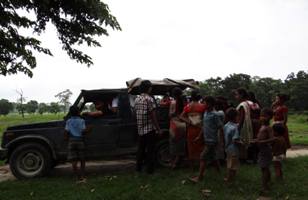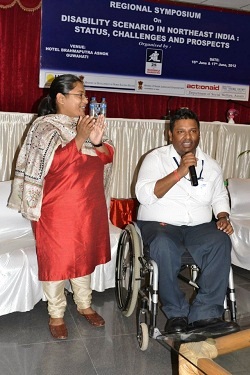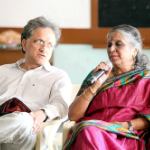A 13-year-old girl interviewed me today about my job through which I communicate with journalists around the world, about climate change and other environmental issues. She is part of the generation that a new poll says, is worried about such things.
The UNICEF poll – published on 17 April 2013 -- found that three-quarters of British 11 to 16-year-olds had fears about how global warming will change the world. Two-thirds of them also worried about how climate change would affect other children in other parts of the world.
And while these concerned children want their government to act on climate change, they may need to be the leaders themselves. They will need to be teachers too. It is because the British government had decided to remove climate change from the national curriculum for children under 14. It’s a move that scientists, business leaders and others have criticised as "unfathomable and unacceptable".
It is more than this. Under the UN Framework Convention on Climate Change — which was agreed in 1992 and entered into force in 1994, nearly 200 governments agreed to promote actions to develop and implement “educational and public awareness programmes on climate change and its effects”.
Their track record so far has been pitiful. By 2010, only Belgium (on behalf of the European Union), Colombia and the Dominican Republic submitted reports on their activities. When I wrote about on Under the Banyan in 2011, most of the readers from around the world who commented said their governments did little or nothing to educate their population on climate change.
More recently, some countries have begun to act. Last year, the government of El Salvador made it mandatory for all educational institutions to incorporate climate risks into their teaching materials.
In March this year, the Dominican Republic launched a national teacher training programme on climate change. In the United States, new science teaching standards will include extensive lessons on human-made climate change. And Kenya’s new national climate change action plan – unveiled in March 2013 -- called for climate change and its impacts to be on the primary school curriculum. It says students at secondary schools need “to be equipped with skills to support a future climate resilient economy” and that “at university level, climate change should be infused into the various professions.” It says:
”Civil engineers, for example, need to learn how to design and develop structures that can withstand climate shocks. Doctors need to be aware of the effects of climate change on human health, while architects should have the skills and training to design houses that are climate-proofed and energy efficient. Teachers ought to be equipped with knowledge about climate change in order for them to be suited to teach a curriculum that integrates climate change across all subjects taught at schools in Kenya. Whereas it is already the case that climate change as a subject is now being taught at Kenyan universities, there will be a need for institutions of higher learning to develop policies to ensure that all students educated there are familiar with climate change, its impact and strategies for adaptation and mitigation.”
These are all initiatives to applaud. But their proof will be in how many students they reach and how effective they are. Given that governments took nearly 20 years to pledge to educate people on climate change, it looks clear that the people will need to teach themselves. While parents have a role to play in climate change education, it is hard for them to be truthful about climate change without scaring their children. The Yale Forum on Climate Change and the Media this week published a long essay on this topic.
Where governments fail and parents feel unsure, young people are confident in how to talk about climate change to their peers. They include Esther Agbarakwe, the 19-year old Nigerian who each Wednesday uses Twitter to coordinate a live conversation between climate experts and anyone worldwide who is interested, or 18-year old Merna Ghaly from Egypt, a leading member of the Arab Youth Climate Movement. This month Newsweek Magazine, in the United States, named her one of the top ‘125 Women of Impact’, alongside heads of state and business leaders.
Or Esha Marwaha, the 15-year old student and member of the UK Youth Climate Coalition who organised a campaign that called on the UK Department for Education to reinstate climate change into the school curriculum.
These three young women are just some of the members of growing band of passionate communicators who are not waiting for teachers or parents or politicians to lead the way. They are growing in number and are increasingly connected. They cooperate internationally in ways nations will need to if they are to tackle climate change. They are the future and they are here today. More power to them.
Find us on facebook: facebook.com/TheThumbPrintMag







































